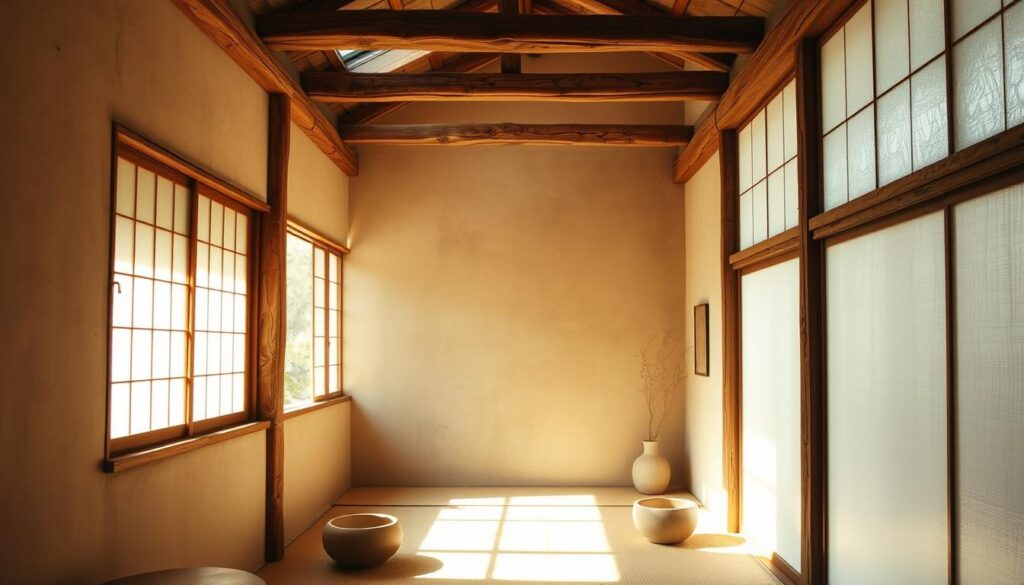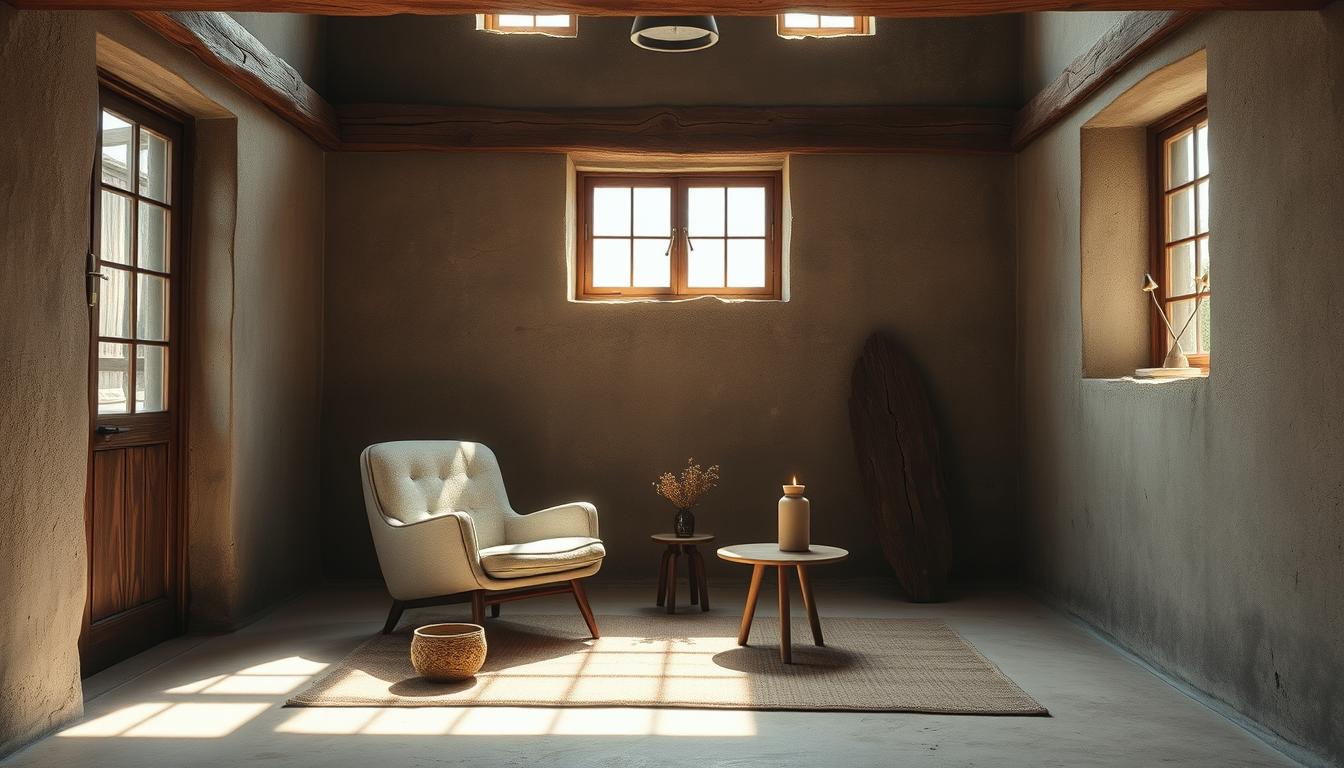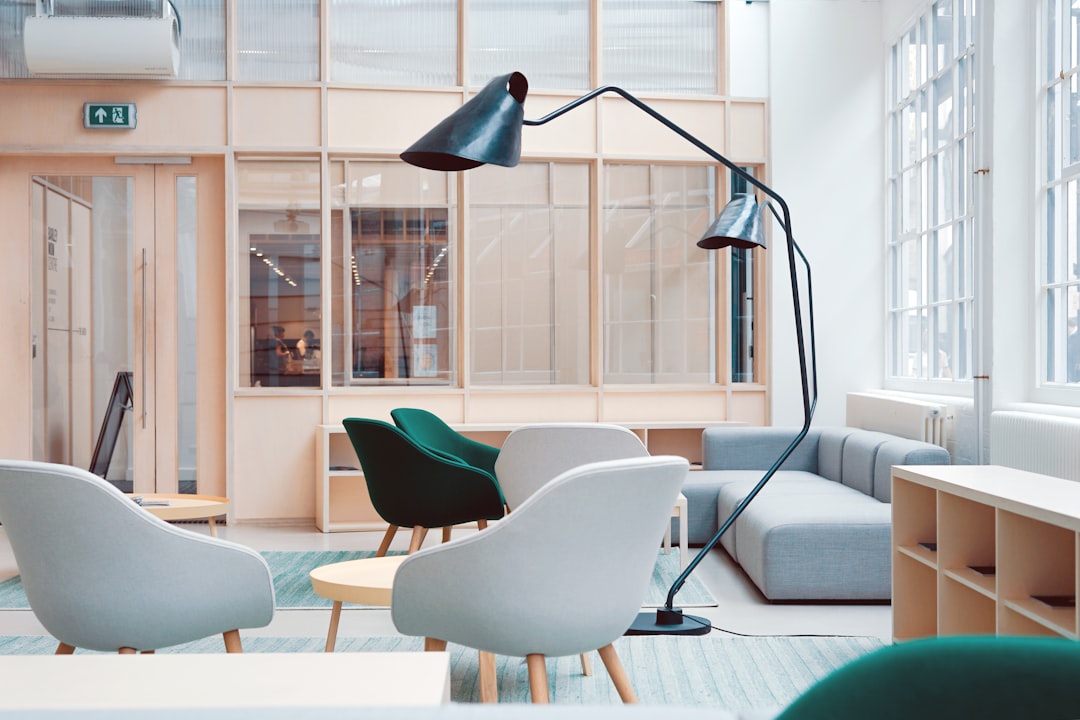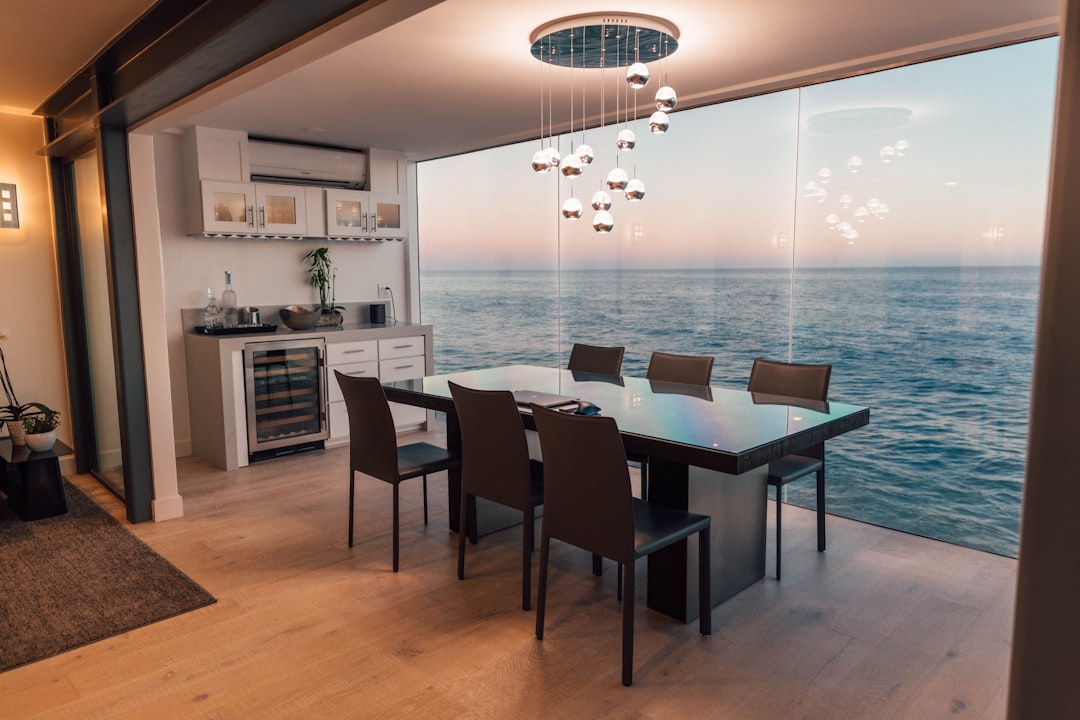In a world where perfection is often the goal, wabi sabi offers a refreshing alternative. It celebrates the beauty of imperfection and impermanence. This creates spaces that are not only stunning but also deeply meaningful.
Exploring wabi sabi interior design draws us to its serene and simple aesthetic. This Japanese design philosophy values simplicity and the beauty of aging. It makes any home unique and authentic.
Key Takeaways
- Embracing imperfection and impermanence in your home decor
- Incorporating natural materials and textures
- Creating a serene and simple aesthetic
- Emphasizing the beauty of aging and wear
- Developing a unique and authentic home atmosphere
Understanding Wabi Sabi: The Philosophy of Imperfection
Wabi sabi celebrates the imperfect, the impermanent, and the authentic. It’s a traditional Japanese philosophy. It helps us see the world, including interior design, in a new light.
Wabi sabi comes from Japanese culture and spirituality. It started with ancient tea ceremonies, focusing on simplicity and imperfection. Now, it influences Japanese architecture and interior design.
Origins of Wabi Sabi
“Wabi sabi” comes from two Japanese words. “Wabi” means the beauty of simplicity and imperfection. “Sabi” means the beauty of age and time. Together, they show us the beauty in the world.
Key Principles of Wabi Sabi
Wabi sabi values imperfection, impermanence, and simplicity. It sees beauty in worn and aged things. In design, it means using natural materials and muted colors.
It helps us create spaces that are beautiful and authentic. Wabi sabi teaches us to slow down and appreciate the simple things.
Embracing Change and Transience
Wabi sabi emphasizes the fleeting nature of life. It teaches us to accept change. In design, this means embracing the aging of materials and the changing nature of our spaces.
By accepting change, we can live more mindfully. We find beauty in the seasons, the wear on furniture, and the patina on decorations.
Core Elements of Wabi Sabi Interior Design
To truly capture the spirit of wabi sabi, it’s essential to understand its core elements. These elements highlight the beauty of imperfection. Wabi sabi interior design is not just about looks; it’s about embracing the simple, the natural, and the imperfect.
Natural Materials
One of the foundational elements of wabi sabi design is the use of natural materials. Wood, stone, and paper are commonly used to add warmth and texture. These materials bring a sense of the outdoors inside and develop a beautiful patina over time.
The use of natural materials in wabi sabi design encourages a connection to nature. It promotes a sense of sustainability. By choosing raw and unprocessed materials, we can create spaces that feel organic and authentic.
Earthy Color Palettes
Wabi sabi interior design often features earthy color palettes that are muted and subtle. These colors, inspired by nature, create a calming and serene atmosphere. Shades of beige, taupe, and moss green are typical of the wabi sabi aesthetic, providing a soothing backdrop for other design elements.
By focusing on earthy tones, wabi sabi design avoids bold statements. Instead, it opts for understated elegance. This allows the beauty of natural materials to shine.
Organic Forms
The incorporation of organic forms is another key element of wabi sabi interior design. This can include irregular shapes, handmade items, and pieces that show signs of wear and tear. Organic forms add a layer of authenticity to a space, reminding us of the impermanence and uniqueness of natural objects.
By embracing organic forms, we can create interiors that are not only visually interesting. They are also rich in character and story.
Creating a Wabi Sabi Space: Step-by-Step Guide
Creating a wabi sabi space is more than just decorating. It’s about making a peaceful place that soothes the soul. We focus on simplicity, natural textures, and meaningful items that share stories.
Declutter for Simplicity
The first step is to declutter and simplify. Getting rid of things we don’t need makes our space calm and serene. This simplicity is key to wabi sabi design, letting us see beauty in the simple things.
Begin by removing items that don’t serve a purpose or bring joy. This mindful way of living is central to wabi sabi. It teaches us to value quality over quantity.
Incorporate Texture and Layering
Wabi sabi design loves natural textures and layering. Adding wood, stone, and linen textures makes our space interesting. Layering with throws, rugs, and pillows makes it cozy and inviting.
It’s important to mix textures in a way that feels natural and balanced. This balance is key to creating a peaceful and welcoming space that shows the wabi sabi spirit.
Select Meaningful Pieces
The last step is to choose items that have meaning or sentimental value. These could be vintage finds, family heirlooms, or handmade items. They add authenticity and character to our space.
Choose items that touch your heart. These might be passed-down treasures or souvenirs from travels. Each item should tell a part of your space’s story, showing your personality and values.
Furniture Choices: What Works Best?
In Wabi Sabi interior design, we love rustic, vintage, and handmade furniture. These pieces add character and tell stories. They show the beauty of imperfection that Wabi Sabi celebrates.
Rustic and Vintage Furniture
Rustic and vintage furniture are key in Wabi Sabi design. They’re valued for their imperfect beauty and history. A vintage armchair, for example, is more than furniture; it’s a piece of history.
We choose furniture with signs of wear and age. These imperfections make the furniture more charming and authentic. Scratches or dents are seen as signs of a life well-lived.
Handmade and Artisan Pieces
Handmade and artisan pieces are essential in Wabi Sabi spaces. They’re crafted with care, showing the artisan’s touch. A handmade wooden table, for instance, is a piece of art that adds warmth and rustic decor to our homes.
The beauty of handmade items is their uniqueness and human touch. They’re made with care, unlike mass-produced furniture.
| Furniture Type | Characteristics | Wabi Sabi Value |
|---|---|---|
| Rustic Furniture | Worn, aged, distressed finish | Imperfect beauty, tells a story |
| Vintage Furniture | Historical significance, unique patina | Adds character, nostalgic value |
| Handmade Furniture | Unique, crafted with care, human touch | Embodies imperfection, artisanal quality |
Choosing rustic, vintage, or handmade furniture enhances our Wabi Sabi space. It adds history, character, and a sense of humanity. These pieces remind us that true beauty is in imperfection and the stories they tell.
Color Schemes: Choosing the Right Palette
In Wabi Sabi design, color choice is more than looks. It’s about creating calm and tranquility. A well-chosen palette can make a space feel serene and welcoming.
The Wabi Sabi philosophy loves the beauty of imperfection and simplicity. This is seen in its color choices. By using neutral tones and soft shades, we create a peaceful space that shows the true spirit of Wabi Sabi.
Neutral Tones for Calm Spaces
Neutral tones are key in Wabi Sabi color schemes. Beige, cream, and soft grays are common, bringing a soothing feel. These colors let the natural beauty and imperfections of Wabi Sabi design shine.
Choosing a neutral palette helps us achieve a minimalist aesthetic that’s calming and attractive. This simplicity also lets us add natural elements and meaningful decor easily.
Accents of Color Through Art and Decor
While Wabi Sabi values neutrality, it doesn’t mean no color. Color is used wisely. Art, decor, and natural elements like plants or stones add color. These touches enhance the space’s beauty and interest without losing its calm feel.
When picking accents, we look for items that fit the Wabi Sabi vibe. Pieces that are imperfect, impermanent, or show age are chosen. This approach not only beautifies our space but also adds stories and personal touches.
By mixing neutral tones with carefully chosen accents, we create a Wabi Sabi-inspired space. This space is both peaceful and full of character. This mix of simplicity and depth is what makes Wabi Sabi so appealing.
The Role of Light in Wabi Sabi Design
In wabi sabi design, light is key, adding warmth and coziness. It’s a vital element that shapes a room’s feel. In wabi sabi, light highlights the space’s natural beauty, bringing tranquility.
Maximizing Natural Light
Wabi sabi design focuses on natural light. We use sheer curtains or blinds to let sunlight in. This reduces the need for artificial light and connects us to the outdoors.
Maximizing natural light makes spaces brighter and more welcoming. It makes them feel larger and more airy. Embracing natural light’s simplicity is essential.

Using Soft Lighting Fixtures
When natural light isn’t enough, we use soft lighting. Table lamps, floor lamps, or pendant lights with soft shades add warmth. These fixtures light up the space and add to its beauty.
Soft lighting creates a cozy atmosphere for relaxation. It’s about layering light to add depth and interest to our spaces.
By balancing natural and artificial light, we craft a wabi sabi space. It’s serene, welcoming, and deeply connected to nature.
Textiles and Fabrics: Adding Comfort
To get a true Wabi Sabi look, we need to pick textiles that show simplicity. Fabrics are key in Wabi Sabi design, making our space cozy and warm.
We choose natural materials like cotton, linen, or wool. They feel great and make our space feel real. These materials also follow the Wabi Sabi idea of loving nature.
Natural Fabrics for Authenticity
Natural fabrics are at the heart of Wabi Sabi design. They bring the outdoors inside, blending nature with our homes. For example, linen adds a soft texture and organic feel to our spaces.
| Material | Characteristics | Use in Wabi Sabi Design |
|---|---|---|
| Cotton | Soft, breathable, versatile | Ideal for casual, everyday textiles like bedding and curtains. |
| Linen | Natural texture, cooling properties | Perfect for summer throws and table runners, adding a rustic touch. |
| Wool | Warm, durable, natural insulation | Great for blankets and rugs, providing warmth in colder climates. |
Embracing Textural Contrast
To make our Wabi Sabi space interesting, we mix smooth and rough textures. For example, a smooth linen sofa with a chunky wool throw blanket looks great together.
By loving natural fabrics and mixing textures, we make a cozy Wabi Sabi space. It shows the beauty of rustic decor and Wabi Sabi interior design perfectly.
Incorporating Nature: Indoor Plant Life
Indoor plants can add natural beauty to your home. They make your space look better and help keep it healthy.
Plants are key in wabi sabi design. They bring nature indoors, making rooms feel calm and connected.
Benefits of Indoor Plants
Indoor plants are great for wabi sabi. They clean the air, boost our mood, and add beauty. They help make our homes peaceful and simple.
Plants also connect us to nature, even in cities. This connection is important in wabi sabi. It teaches us to appreciate nature and the fleeting nature of life.
Recommended Low-Maintenance Plants
Starting with indoor plants is easy. There are many low-maintenance options for wabi sabi spaces. Plants like snake plants and spider plants are perfect. They need little care and can grow well in different conditions.
- Snake plants clean the air and need little water.
- Spider plants are easy to grow and add a soft touch to any room.
- ZZ plants and peace lilies are also good choices. They’re easy to care for and make spaces calm.
Choosing the right plants can make your home feel calm and connected to nature. This is the essence of wabi sabi.
Navigating Space: Layout Considerations
A well-designed layout is key to achieving the minimalist aesthetic of Wabi Sabi interior design. As we move through our living spaces, the layout is crucial. It helps create harmony and functionality.
In Wabi Sabi design, finding the right balance is essential. This balance between openness and defined areas creates a serene atmosphere. Let’s look at how this balance affects our space’s flow and functionality.
Open Spaces vs. Defined Areas
The mix of open spaces and defined areas is vital in Wabi Sabi layout design. Open spaces offer a sense of freedom and simplicity. Defined areas add functionality and coziness.
To find a harmonious balance, consider these tips:
- Use natural materials and textures to define areas without isolating them.
- Employ furniture that serves multiple purposes, maintaining openness.
- Leave some spaces unadorned to preserve the sense of simplicity.
Flow and Functionality
The layout greatly affects a space’s flow and functionality. In Wabi Sabi design, the aim is to create a smooth flow. This flow should guide the eye and movement through the space effortlessly.
To improve flow and functionality, try these strategies:
| Strategy | Description | Benefit |
|---|---|---|
| Minimize Clutter | Keep surfaces clear and clutter-free. | Enhances the sense of calm and openness. |
| Optimize Furniture Placement | Arrange furniture to facilitate easy movement. | Improves flow and functionality. |
| Utilize Multi-functional Furniture | Choose furniture that serves more than one purpose. | Maintains simplicity while meeting needs. |
By carefully planning the layout and balancing open spaces with defined areas, we can create a Wabi Sabi-inspired space. This space will feel calm, serene, and effortlessly elegant.
Personal Touch: Infusing Your Personality
Making our living space special is what Wabi Sabi design is all about. It’s about creating a space that looks beautiful and tells our story. Adding personal touches helps us achieve a unique blend of authenticity and beauty.
Wabi Sabi celebrates the beauty of imperfection and change. Adding personal touches means sharing a part of ourselves. This can be through family heirlooms, personal collections, or meaningful artwork.
Showcasing Family Heirlooms
Family heirlooms are more than objects; they connect us to our past. Adding these pieces to our Wabi Sabi design adds depth and character. For example, an antique vase or vintage furniture can become a room’s focal point, sharing its own story.
When showing off family heirlooms, think about their history and meaning. Display them prominently to be appreciated for their beauty and the memories they bring.
| Heirloom Type | Display Suggestion | Significance |
|---|---|---|
| Vintage Furniture | Use as-is or refurbish to highlight its original charm | Represents family history and craftsmanship |
| Antique Jewelry | Display in a glass case or shadow box | Symbolizes love and heritage |
| Family Artwork | Hang prominently in a living area | Reflects personal taste and family creativity |
Curating a Personal Gallery
Creating a personal gallery is another way to add our personality to our Wabi Sabi space. It’s about picking pieces that speak to us, like artwork, photos, or collectibles. The goal is to choose items that tell a story or stir emotions.
A well-curated gallery wall can be a stunning centerpiece. Mix frame styles and sizes for visual interest. Think about the story behind each piece and how they work together to enhance the space’s look.
By carefully adding personal elements, we can make a Wabi Sabi-inspired space that’s not just beautiful but also deeply personal. It’s about embracing the beauty of imperfection and the uniqueness of our own story.
Maintaining the Wabi Sabi Aesthetic Over Time
As we continue our wabi sabi journey, we must think about keeping this unique look over time. Wabi sabi interior design is more than just a space. It’s a way of life that values simplicity and natural elements.
Caring for Imperfect Surfaces
Caring for imperfect surfaces is key to keeping the wabi sabi look. We should love the patina on our furniture and decor, not try to fix it. This way, our belongings keep their character and tell stories of their past.
Embracing Evolving Spaces
Our spaces should grow with us, showing changes in our lives and tastes. By accepting these changes, our wabi sabi space stays beautiful and true to itself. This allows us to add new pieces, reuse old ones, and always find the beauty in simplicity and nature.



